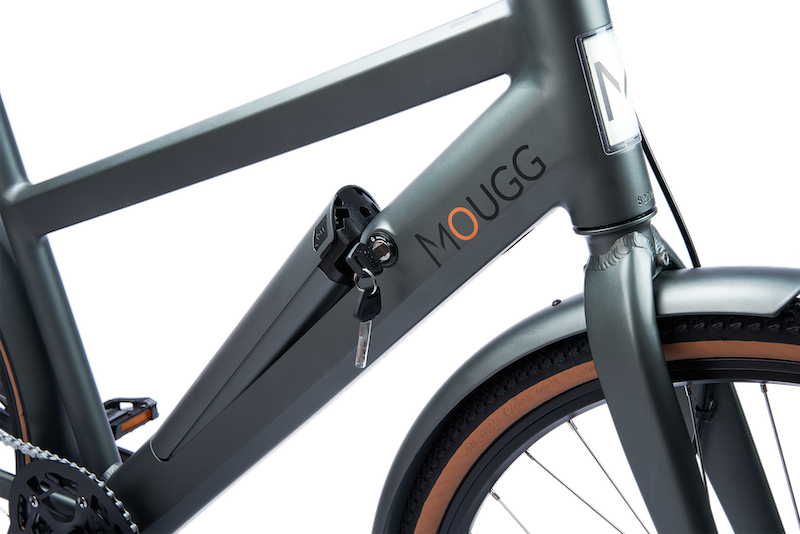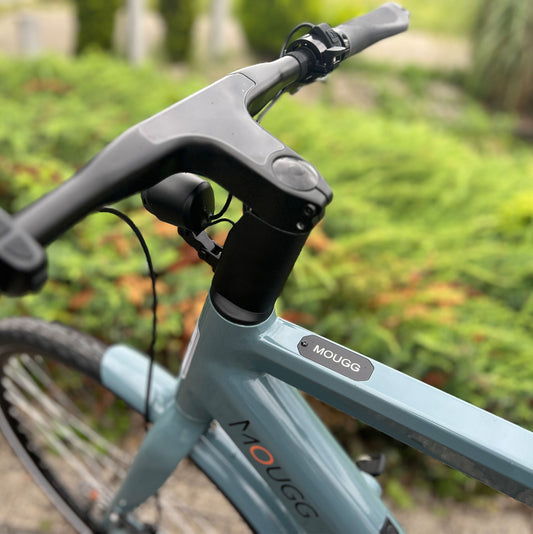
Akkus für E-Bikes
Share
Mehr zum Thema Akku
Die Kapazität eines Akkus wird von welchen Faktoren bestimmt? Wie lange hält ein Akku für ein E-Bike? Welche Reichweite kann man mit einem MOUGG Akku erreichen? Von welchen Faktoren hängt die Reichweite eines E-Bike-Systems ab? Was sind die Kosten für das Aufladen eines Akkus?
Der Akku spielt eine zentrale Rolle bei E-Bikes, da er gemeinsam mit dem Motor für den zusätzlichen Antrieb beim Fahren sorgt. Es ist daher wichtig, sich vor dem Kauf eines E-Bikes nicht nur über die verschiedenen Motoren, sondern auch über die unterschiedlichen Akku-Typen zu informieren, da diese sich in ihrer Handhabung und Reichweite erheblich unterscheiden können.
Die Kapazität eines Akkus wird durch die elektrische Spannung in Volt (V), die Ladungsmenge in Amperestunden (Ah) und der daraus resultierenden gespeicherten elektrischen Energie in Wattstunden (Wh) bestimmt. Die kapazitiven Eigenschaften eines Akkus ergeben sich aus der Formel Wh = V * Ah.
Das heißt: die Wattstunden (Wh) berücksichtigen sowohl die Kapazität (Ah) als auch die Spannung (V) des Akkus. Die Angabe der Wattstunden (Wh) gibt also einen genaueren Hinweis auf die tatsächliche Leistungsfähigkeit des Akkus im Vergleich zu Angaben in Amperestunden (Ah) allein. Es ist daher empfehlenswert, beim Vergleich von verschiedenen Akkus auf die Wattstunden-Angabe zu achten.
Ein Beispiel für einen MOUGG-Akku wäre: Bei einer Spannung von 36 Volt und einer Ladungsmenge von 10,5 Amperestunden ergibt sich eine Kapazität von ungefähr 375 Wattstunden.
Lithium-Ionen-Akkus zeichnen sich nicht nur durch eine hohe Energiedichte aus, sondern auch durch eine lange Lebensdauer von etwa 500 bis 1.000 Ladezyklen. Es ist jedoch zu berücksichtigen, dass der Akku in der Praxis oft nur teilweise geladen wird. Wenn der Akku zum Beispiel zweimal von 50 auf 100 % aufgeladen wird, ergibt erst die Kombination beider Teilladungen einen vollständigen Ladezyklus. Nach 500 bis 1.000 Ladezyklen sind die Akkus jedoch keineswegs defekt, sondern haben oft noch mehr als die Hälfte ihrer ursprünglichen Kapazität. Wir können auch aus der Praxis bestätigen, dass in unseren Werkstätten oft Inspektionen und Wartungsarbeiten an E-Bikes durchgeführt werden, deren Akkus auch nach 3 bis 5 Jahren noch über eine ausreichende Kapazität verfügen.
Die Reichweite eines E-Bikes hängt nicht nur von der Akkukapazität ab, sondern auch vom gewählten Unterstützungsmodus und externen Faktoren. Letztere können sich negativ auf die mögliche Reichweite auswirken. Hier sind die Faktoren und ihre möglichen Auswirkungen im Überblick:Streckenprofil und Umwelteinflüsse:
- Wenn Gegenwind herrscht oder das Gelände viele Steigungen oder Höhenmeter aufweist, steigt der Energieverbrauch des Motors.
Reifenprofil und Reifendruck:
- Ein grobes Profil wie beim E-MTB oder ein zu niedriger Reifendruck führen zu einem höheren Rollwiderstand. Informationen zum empfohlenen minimalen und maximalen Reifendruck für das jeweilige Fahrrad sind auf der Reifenflanke zu finden.
Zuladung und Gewicht:
- Der Energieverbrauch des E-Bike-Systems wird auch direkt vom Gesamtgewicht (E-Bike, Fahrer/-in und Gepäck) beeinflusst.
Fahrweise und Trittfrequenz:
- Obwohl es mit der Unterstützung des Motors möglich ist, in hohen Gängen anzufahren, verbraucht es mehr Energie. Die eBike-Motoren arbeiten am effizientesten mit einer Trittfrequenz von etwa 60 Kurbelumdrehungen pro Minute, die auch als Kadenz bezeichnet wird. Durch häufiges Schalten, insbesondere beim Anfahren oder auf Steigungen, kann die Reichweite um einige Kilometer erhöht werden
Was sollte man bei der Lagerung und Pflege des E-Bikes-Akkus beachten?
- Der Akku sollte bei längerer Nichtbenutzung auf 30 bis 60 Prozent aufgeladen und bei einer Raumtemperatur von 10 bis 20 Grad gelagert werden. Es empfiehlt sich, den Akku alle zwei Monate zu überprüfen und bei Bedarf nachzuladen, da sich die Lithium-Ionen-Zellen mit der Zeit langsam entladen. Es ist wichtig zu beachten, dass der Akku weder großer Hitze noch Kälte ausgesetzt sein sollte. Bei sehr hohen oder niedrigen Temperaturen, insbesondere im Hochsommer oder bei Temperaturen um den Gefrierpunkt, sollte der Akku mit in die Wohnung oder ins Büro genommen werden. Es wird empfohlen, den Akku idealerweise bei der genannten Raumtemperatur zu laden.
Wie lange hält ein E-Bike Akku?
Die Lebensdauer eines Akkus wird maßgeblich von seiner Beanspruchung und Pflege beeinflusst, jedoch ist die Erfahrung gezeigt, dass die Lebensdauer durchweg hoch ist. Viele eBike-Akkus halten daher fünf Jahre oder sogar länger.
Was kostet das Aufladen eines E-BIkes Akkus?
Um einen 375 Wattstunden starken Akku vollständig aufzuladen, muss man bei einem durchschnittlichen Strompreis von etwa 40 Cent pro Kilowattstunde (kWh) ungefähr 15 Cent einkalkulieren (Stand November 2022).




